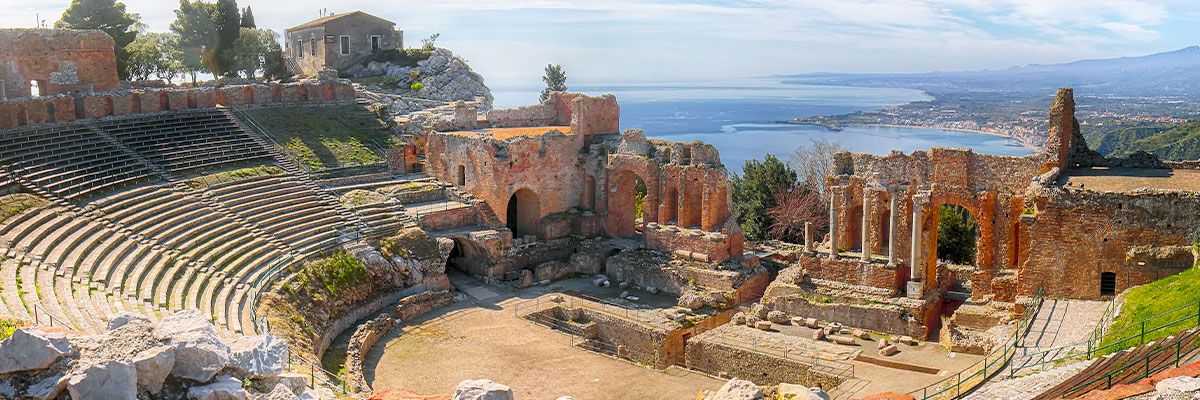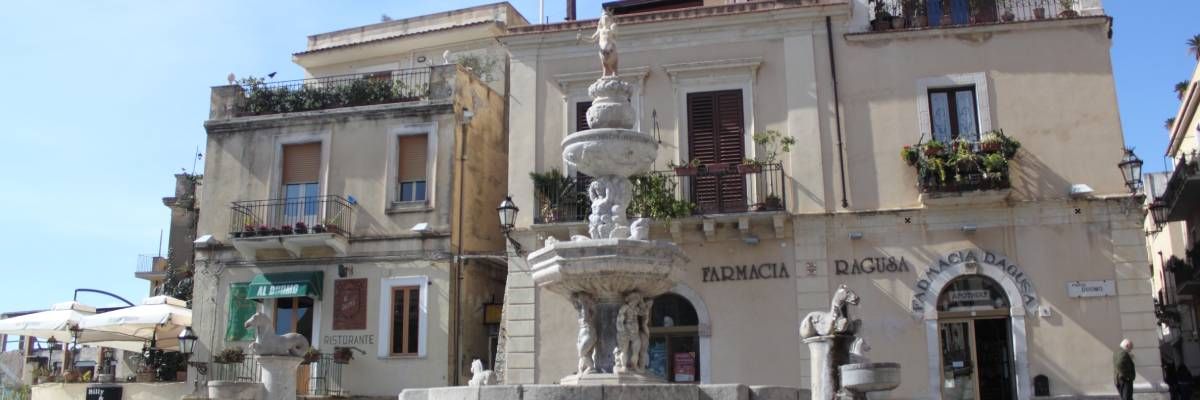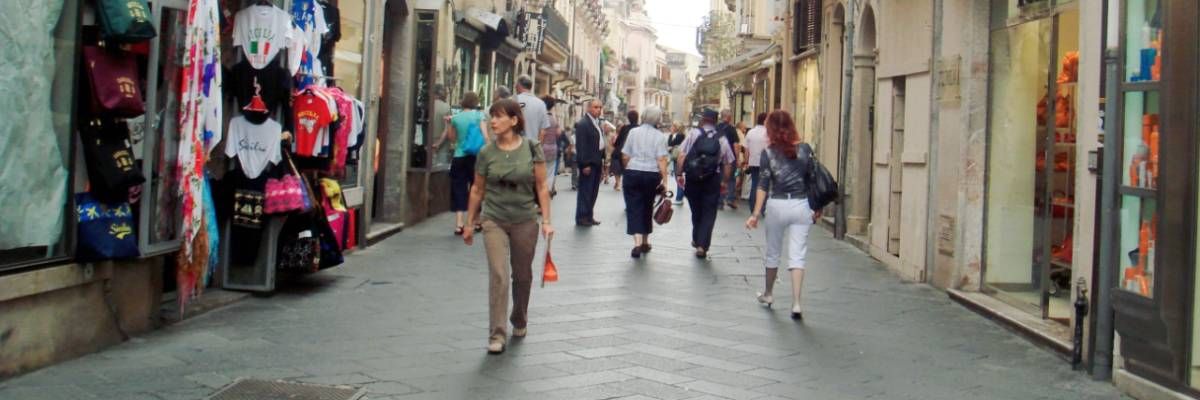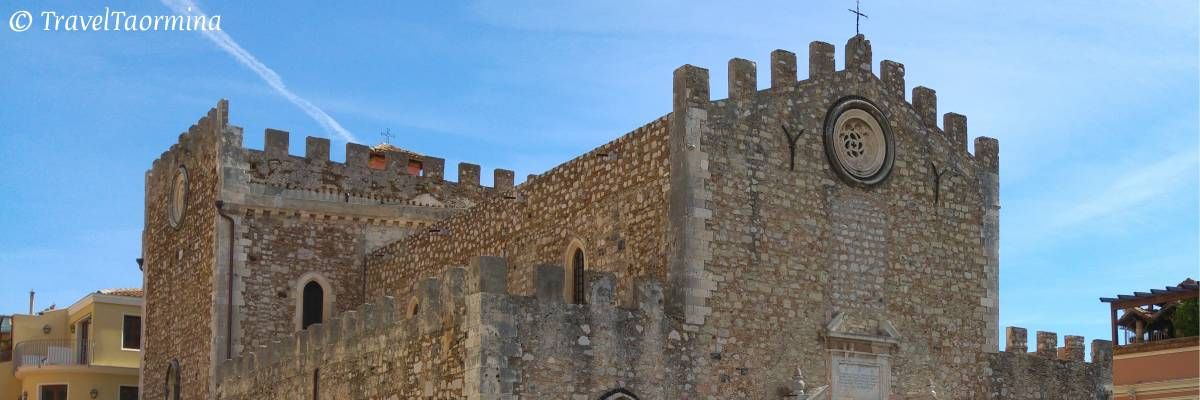Greek Theatre in Taormina

The ancient theatre is without question the most important feature for sight-seers in Taormina, also because for its very fortunate natural setting, with splendid view toward the Calabrian coast, the Ionian coast of Sicily and the spectacular cone of Etna.
The construction of the amphitheater starts probably by the Greeks around the third century. BC, at the time of Hiero II.
To allow the construction was necessary to remove manually from the mountain over 100,000 cubic meters of rock.
The plant was later renovated and expanded by the Romans, who inserted columns, statues and ingenious covers.
HISTORY
The Greek theatre of Taormina, who was born to accommodate dramatic performances or musical, it was transformed during the Roman times to make room for games and gladiatorial battles. This involved the expansion of the orchestra, which in Greek times was destined to the musicians, in order to be adapted to the new function arena.
The theater is divided into several parts:
The scene
The scene is the most important part that remains of the theater and preserves in part its original form. But nothing remains of his ornaments and columns. According to many scholars, the first order was made up of nine columns arranged in groups of three, while the second was formed by sixteen columns lowest equidistant. It is said that these columns arrived by sea to Villagonia, were then attached with ropes and pulled by hordes of slaves to the Theatre. During the Middle Ages most of these columns were removed to build palaces and embellish places of worship, including the Cathedral. The scene is obviously where the actors used to perform.
The orchestra
The orchestra of the theatre was the area was for the musicians, but the choruses and dancers also performed there. In roman age it was trasformed in arena for the games of the gladiators.
The cavea
The cavea is all carved into the rock and could hold up to 5,400 spectators. The steps were separated into two parts; in one sitting spectators, who could also make use of the pillow; in the other half, slightly hollowed, rested his feet that sat on the top step. The first places were definitely reserved to the authorities. Even today, the auditorium is divided into nine sections cuneiform, served eight ladders.
The portici
Behind the wall of the upper closure of the cavea, to increase the number of places, were built brick two large porches that accompanied the whole development of the cavea. The vaults of the arcades supported a terrace each. The first porch supported the lower terrace, divided into several rows of wooden seats reserved for women, while the arc of the second porch, which claimed the highest terrace of the theater, without fixed seats, housed the most humble people.
Access stairs
The scale step makes three turns and narrowed as it rose. In the three carried out there were three doors that introduced the auditorium: the first gave the possibility of entry to the authorities and to the important people, the other spectators had to continue to go up in order to enter the auditorium.
The Greek Theatre of Taormina is the second largest theater of Sicily, after the one in Syracuse, it is also the world's best known and most admired.
Since the 50s the theater has been tapped to host various forms of entertainment like theater, concerts, the award ceremonies of the David di Donatell, symphonies, operas and ballets.
VIDEO
Here's a great video by videoibam showing all the beauty of the Greek Theatre.
TOURIST INFORMATION
ADDRESS
Via Teatro Greco, 40
PHONE: +39 0942 23220 / +39 0942 24291
TIMETABLE
From 1 January to 15 February 09:00 - 16:00
From 16 to 28 February 09:00 - 16:30
From 1 to 15 March 09:00 - 17:00
From 16 to 31 March 09:00 - 17:30
From April 1 to 30 9:00 - 18:30
From May 1 to August 31 09:00 - 19:00
From September 1 to 15 9:00 - 18:30
From September 16 to 30 9:00 - 18:00
From 1 to 15 October 9:00 - 17:30
From 16 to 31 October 09:00 - 17:00
From 1 November to 31 December 09:00 - 16:00
RATES
Full ticket: € 14,00
Reduced ticket: € 7,00 (EU members age 18-25)
Free: 0,00 (EU members under the age of 18; Italian teachers; On your birthday; Every first Sunday of the month; Press)
Audioguide: € 5,00
* For reduced or free tickets, a document proving the requisities is required.
** No senior reductions (in accordante to D.M. 94/2014).
LOCATION
Events
Photo Gallery
Related articles
Fountain Piazza Duomo

Corso Umberto I

Duomo - The Cathedral


 English
English  Italiano
Italiano 



















